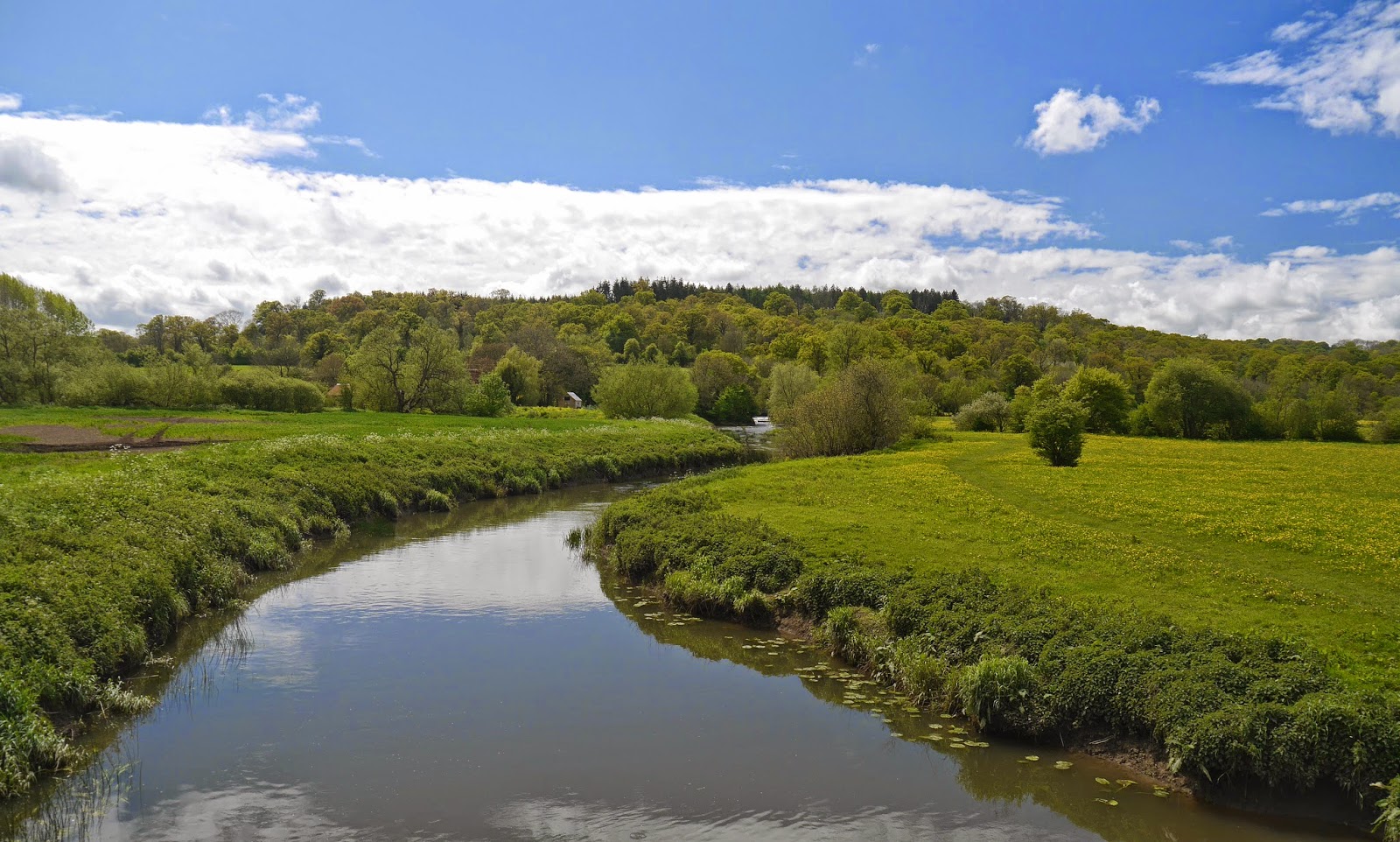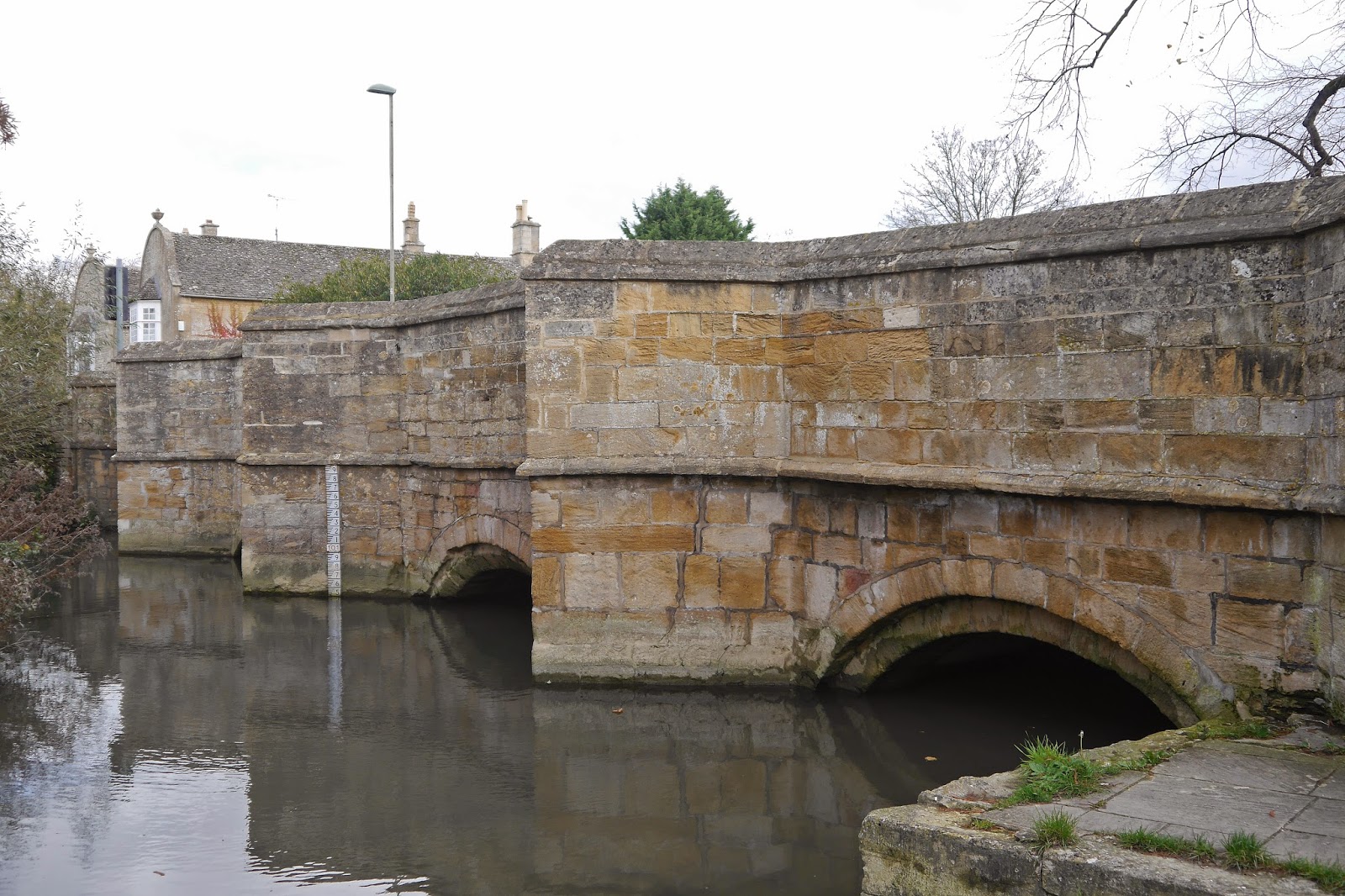The former Town Hall
I met up with my friend Chris for another of our ongoing series of walks in the Chilterns. This one starts at the station and I was staggered to discover when researching it right by the station are the ruins of Berkhamsted Castle. It was founded in Norman times and was of the well-known motte-and-bailey type. Hands up those who know which was the motte and which was the bailey! Happily Wikipedia has the answer: "A motte-and-bailey castle is a fortification with a wooden or stone keep situated on a raised earthwork called a motte, accompanied by an enclosed courtyard, or bailey."At Berkhamsted the motte is still plainly visible at one end of the site as are the straggling remains of the stone wall which surrounded the bailey.
We were most surprised by how large the castle was. The bailey was normally surrounded by a defensive ditch (not usually a moat) and Berkhamsted is unusual in having two ditches, which can still be clearly seen.
We headed round the perimeter of the castle and up a hillside and then along a ridge. There were nice views back down to the town and across to a ridge on the other side but it was too hazy to be worth a photo.
We descended back to the road and climbed a bit more to reach a war memorial. This commemorates the work of the Inns of Court Officers Training Corps which trained more than 12,000 officers during the First World War. It took me a moment to realise that this did not imply that all the offers came from the Inns of Court. We saw a sign nearby to the trenches which were used for this work.
We now walked a cross a golf course to reach the hamlet of Frithsden, where we manfully resisted the temptations of the attractive pub and of the winery, which was open for tastings. We did stop however to admire the wonderful Little Manor whose upper storeys are covered in pargeting, decorative plasterwork. We saw a wonderful example in Ipswich called the Ancient House.
The house is believed to date from 1513 and a plaque on the right of the facade records a restoration in 1879 by Lady Marion Alford and her son Earl Brownlow. The coat of arms is that of the Brownlow family.
We followed a field-edge path towards Nettleden and as we descended admired the gently curving valley ahead with a handsome beech tree proudly standing in the middle. I included the pink horse box in my picture for a splash of colour.
We followed the winding valley path past the tree and were making good progress until it suddenly disappeared.
The section was very hard work, but eventually we arrived at the outskirts of Ashridge, where we turned sharply left and climbed a grassy area crossed Berkhamsted Common and eventually entered Frithsden Beeches, a very pleasant area of woodland. We emerged into open country and walked back to the station.
I wanted to have a quick look at the town and crossed the bridge over the Grand Union Canal ...
... to reach the attractive High Street, with a nice miscellany of building from the 16th century onwards. To the left there was the Old Town Hall and Market Place (see photo at the head of this post). It is a rather picturesque building of 1859 by E B Lamb. In the other direction along the High St are the John Sayer Almshouses of 1684. Sayer was the Chief Cook to King Charles II. This sounds fairly modest, but he was able to leave £1000 in his will to pay for the almshouses.
Conditions: grey, drab.
Distance: 7.75 miles.
Map: Explorer 181 (Chiltern Hills North).
From: Walking in the Chilterns (Cicerone)
Rating: four stars.























































